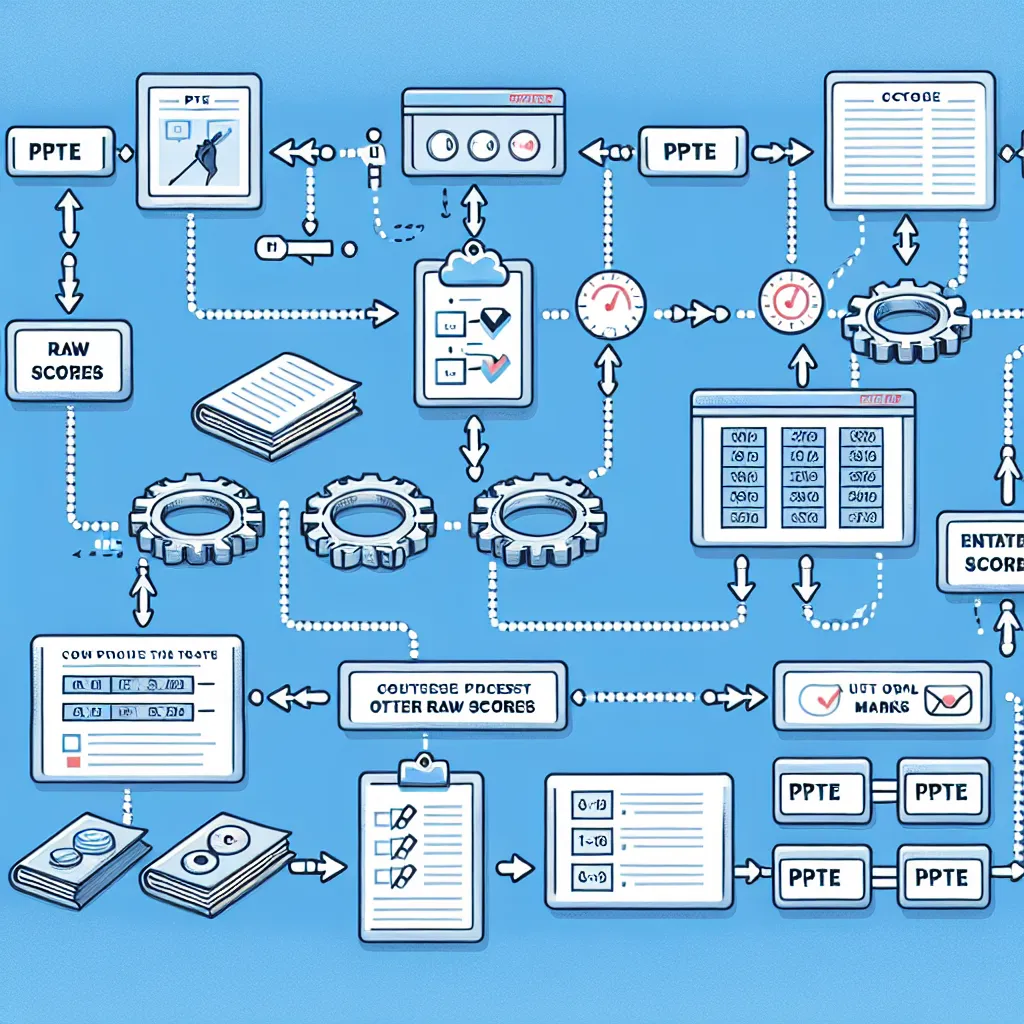Are you preparing for the Pearson Test of English (PTE) Academic and wondering about its scoring system? Understanding how the PTE scoring works is crucial for your exam success. In this comprehensive guide, we’ll break down the PTE scoring system, explain how it’s calculated, and provide valuable insights to help you achieve your desired score.
Understanding the PTE Scoring System
The PTE Academic uses a unique scoring system that evaluates your English language skills across various tasks. Unlike traditional exams, PTE employs advanced artificial intelligence and machine learning algorithms to ensure fair and accurate scoring.
 PTE Scoring System Overview
PTE Scoring System Overview
Communicative Skills Scores
PTE Academic assesses four main communicative skills:
- Listening (10-90 points)
- Reading (10-90 points)
- Speaking (10-90 points)
- Writing (10-90 points)
Each of these skills is scored independently, and your performance in one section doesn’t directly affect the others. This allows for a more accurate representation of your language abilities across different areas.
Enabling Skills Scores
In addition to the communicative skills, PTE also evaluates five enabling skills:
- Grammar (10-90 points)
- Oral Fluency (10-90 points)
- Pronunciation (10-90 points)
- Spelling (10-90 points)
- Vocabulary (10-90 points)
These scores provide more detailed insights into specific aspects of your language proficiency.
Overall Score
Your overall PTE score ranges from 10 to 90 points. This score is calculated based on your performance across all tasks in the test and reflects your overall English language ability.
How PTE Scores Are Calculated
Understanding the calculation process can help you better prepare for the exam and set realistic goals.
Item Scoring
Each item (question or task) in the PTE exam is scored differently:
- Selected response items: Scored as either correct or incorrect
- Partial credit items: Points awarded based on the degree of correctness
- Extended constructed response items: Scored on multiple dimensions using sophisticated scoring algorithms
Scaling and Weighting
Raw scores from individual items are converted to a common scale to ensure consistency across different test forms. The scaled scores are then weighted according to their importance in assessing overall language proficiency.
Score Aggregation
Finally, the weighted scores are combined to produce the communicative skills scores, enabling skills scores, and the overall score.
 PTE Score Calculation Process
PTE Score Calculation Process
Key Features of the PTE Scoring System
Objective Scoring
One of the most significant advantages of the PTE scoring system is its objectivity. By using advanced AI and machine learning algorithms, PTE eliminates human bias and ensures consistent scoring across all test takers.
Detailed Performance Analysis
The PTE score report provides a comprehensive breakdown of your performance, including:
- Overall score
- Communicative skills scores
- Enabling skills scores
- Score profile showing your performance on individual test items
This detailed analysis helps you identify your strengths and areas for improvement.
Score Validity
PTE scores are valid for two years from the date of the test. This gives you ample time to use your scores for various purposes, such as university applications or visa requirements.
Tips for Maximizing Your PTE Score
- Understand the scoring criteria for each task type
- Practice time management to attempt all questions
- Focus on improving both communicative and enabling skills
- Use official PTE practice materials to familiarize yourself with the test format
- Take mock tests to gauge your progress and identify weak areas
Common Misconceptions About PTE Scoring
Myth 1: Speaking faster improves your score
Reality: Speaking at a natural pace with clear pronunciation is more important than speed.
Myth 2: Using complex vocabulary always increases your score
Reality: Using appropriate vocabulary correctly is more valuable than forcing complex words into your responses.
Myth 3: Longer responses always score higher
Reality: Content relevance and coherence are more critical than length in written and spoken responses.
Next Steps in Your PTE Preparation
Now that you understand how the PTE scoring system works, it’s time to put this knowledge into practice:
- Take a diagnostic test to assess your current level
- Create a study plan focusing on your weak areas
- Use official PTE preparation materials and resources
- Practice regularly with timed mock tests
- Review your progress and adjust your strategy as needed
Remember, understanding the scoring system is just one part of your PTE preparation. Consistent practice and targeted improvement in all language skills are key to achieving your desired score.
In conclusion, the PTE scoring system is designed to provide a fair, accurate, and comprehensive assessment of your English language skills. By understanding how it works and following the tips provided, you can approach the test with confidence and maximize your chances of success. Good luck with your PTE preparation!
[internal_links]




